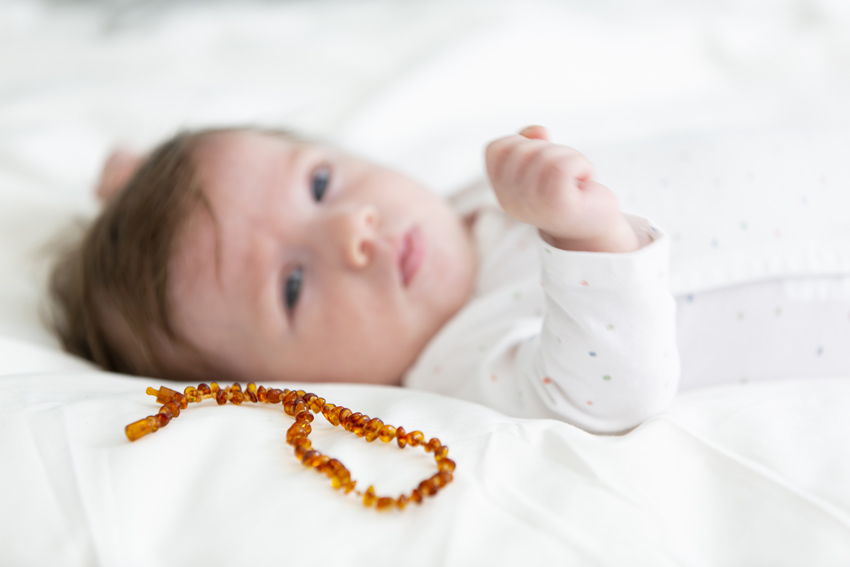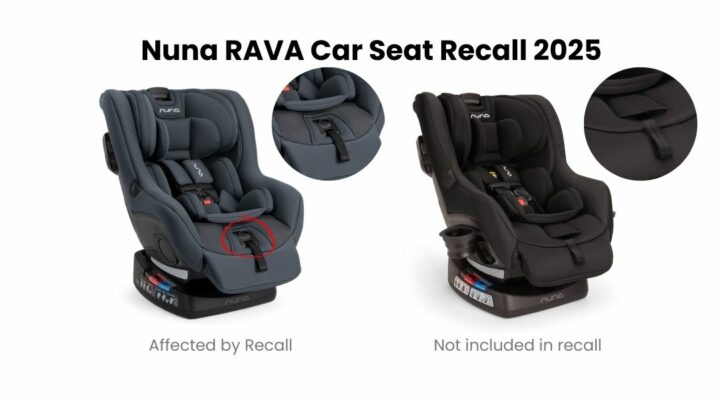Teething jewelry has become a popular go-to for parents looking for natural relief for teething pain. But are teething necklaces, such as the amber teething necklaces, safe? Or even effective?
We’d like to note that Blossom does not and will not carry amber teething necklaces. Baby safety is of paramount importance for us, which is why we don’t sell Dock-A-Tot’s, amber necklaces, crib bumpers, pacifier clips with beads, and more.
In 2018, the FDA issued an alert regarding the safety risks that jewelry poses to children. Besides teething, jewelry is also being used for sensory stimulation for children with autism or ADHD.
Risks associated with jewelry marketed for teething includes:
- Choking
- Strangulation
- Injuries to the mouth
- Infections
Choking happens when jewelry breaks and small beads/stones enter the child’s mouth or airway.
Strangulation can occur if the necklace becomes wrapped too tightly around the child’s neck from twisting/turning, or catching on an object such as the corner of a crib.
Another study published in 2018 from researchers in Nova Scotia tested the strangulation risk of 15 amber teething necklaces purchased from retailers with claims of a safety clasp. Of those tested, nearly half failed to open after applying 15 pounds of force (which is an industry safety standard) for 10 seconds, and 8 out of 10 failed to open with 1.6 pounds of force (this is enough force to block a young child’s airway) for 10 seconds.
Why Do Amber Teething Necklaces Exist?
Manufacturers of these products claim that when amber is warmed next to a babies skin, it releases a compound called succinic acid which allegedly acts as an anti-inflammatory and can relieve joint and teething pain.
However, in order for these chemicals to be released, the amber has to be subjected to very high temperatures – around 400 degrees Fahrenheit. A baby’s skin will obviously never get this hot.
Were children killed or injured from Teething Jewelry?
Yes. The FDA issued their 2018 alert after receiving reports of a 7 month old who choked on beads of a wooden teething bracelet and needed hospital intervention. Another incident involved an 18 month old who was strangled to death by an amber teething necklace when it got caught on a crib during a nap. The teething necklace was purchased from a seller on Etsy and given as a baby gift. This necklace was advertised as having a safety clasp, but had a screw clasp which would not self-release.
Are Amber Teething Necklaces Banned?
Not in the United States. France and Switzerland have banned the sale of amber teething necklaces in pharmacies, and Ireland and Canada have issued consumer safety warnings similar to the FDA.
Most products are not regulated by the government for safety until they become unsafe. And even then, it can be a very long road to outright ban products. An example of this is the drop side crib, which was banned in 2010 after causing the deaths of at least 32 infants. The last previous safety regulation regarding cribs was in 1973.
What Can I Use for Safe Teething?
We recommend using products from trusted brands that are large enough that a child cannot fully fit it in their mouth. Silicone is typically considered safe for teething as a baby can easily grip it and chew on it without risk of choking. Certain wood toys or fabric toys can be used safely for teething as well.
You can also use your fingers or a soft washcloth with cool water to gently massage your child’s gums if they allow.
What other teething products should I avoid?
- Avoid items with small pieces even if they are advertised as safe or baby safe
- Avoid teething products that you put in the freezer, as they could become too hard and harm little gums. If you do purchase these only put them in the refrigerator and avoid ones with gel – choose ones with water so they’re safe if they break open.
- Avoid topical gels such as benzocaine since they are not effective and can cause serious side effects.
- You should also avoid homeopathic teething remedies which have not been evaluated by the FDA. These products can contain toxic substances such as belladonna.
In conclusion, it’s important to be vigilant about the products you buy for your child – regardless of how popular they may be. Just because a product is available to purchase does not mean it’s regulated by the government or safe to use. Marketplaces like Etsy, and even third-party sellers on Amazon often overstate safety claims and face little to no consequences for it if or when something goes wrong.
Sources:
- https://www.fda.gov/news-events/press-announcements/fda-warns-about-safety-risks-teething-necklaces-bracelets-relieve-teething-pain-or-provide-sensory?fbclid=IwAR2dK-uMf7ExLT2KBdCColnjmYkiSY750BKznD9nd70ObPvq7pYvxJBBnPE
- https://www.thestreet.com/personal-finance/insurance/are-current-crib-standards-enough-12806653
- https://www.nytimes.com/2020/04/18/parenting/amber-teething-necklaces.html




